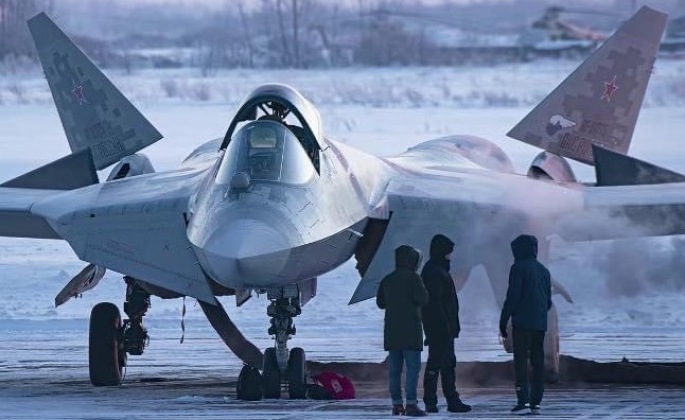On March 11 the first footage emerged reportedly showing a Russian Su-57 Felon fighter operating over Ukraine, which is thought to be part of the country’s sole squadron of an estimate five serial production aircraft deployed under the Southern Military District within range of Ukrainian airspace. The fighter was observed in the Berdichev district of Ukraine’s Zhytomyr region and appeared to be carrying out a strike, with locals reporting an unusual sound resembling the characteristic of the fighter’s unique AL-41F1 engines. Although the Su-57 has been deployed for combat operations in the past, most notably to Khmeimim Airbase in Syria multiple times since February 2018, deployments over Ukraine may represent the first time Russian Air Force Su-57s which were serially produced have seen combat or deployed outside Russia. It would also represent the first time they have seen combat against a state actor, with deployments to Syria having supported only Damascus’ counterinsurgency efforts. With serial production airframes entering service only from December 2020, prior deployments relied on advanced prototypes which, although inferior particularly in the quality of their airframes and the reduction of their radar cross sections, were considered capable of low intensity combat in Syria. Su-57 prototypes previously deployed Kh-59MK2 cruise missiles in Syria, and may well deploy the same weapons in Ukraine.

There remains a not insignificant possibly that Su-57s were not deployed to Ukraine for combat, but rather to test their sensors and other features such as communications systems and data links in a chaotic wartime environment which would be a primary benefit of flying the new fighters in a war zone. The Su-57 integrates six radars allowing each fighter to track sixty targets simultaneously, as well as an infra red search and track system, which provides a degree of situational awareness thought to be totally unrivalled without relying on data links. Aside from their small numbers, a primary factor preventing the Su-57 from playing an important role in Ukraine is that airframes have only a limited initial operating capability making them unsuitable for high intensity operations than older Su-30SM and Su-35 jets are. The fighter will thus likely not be deployed as aggressively as other Russian assets, nor for air to air combat should what remains of the Ukrainian Air Force seek to return to the skies.
Deploying the Su-57 could serve multiple purposes including testing, signalling strength during negotiations, and demonstrating confidence in the fighter’s capabilities to increase foreign interest in the design and thus possible export sales. 50 Su-57s were intended to be in service by the end of the 2010s, and over 200 by 2025, although severe delays to the program mean that only around 76 will be deployed by the end of 2027. The Ukrainian conflict and escalating tensions with NATO powers could potentially accelerate work on the program and increase investment, particularly as Western powers have increased deployments of fifth generation fighters near Russia’s borders.
